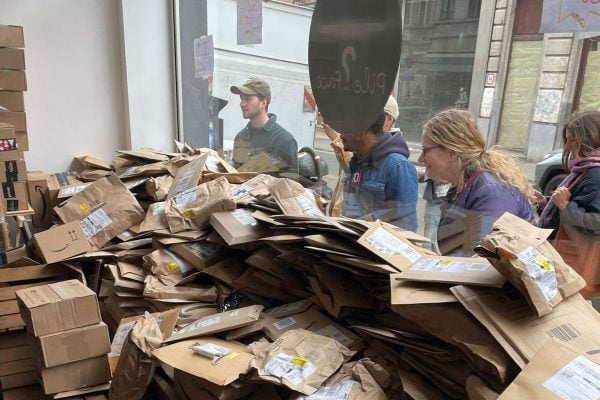For many years there have been complaints of Amazon merchants taking a generic product, putting their brand sticker on it and hijacking an ASIN. The supposed ‘Brand’ then complains to Amazon that the sellers who have helped build the sales history on that ASIN are infringing on their intellectual property rights and get them kicked off the ASIN. This situation has just got worse thanks to Amazon Brand Registry abuse which appears to be rapidly growing.
Putting a sticker on a product doesn’t materially change the product and it’s always been a shady tactic which genuine merchants have detested. If it’s an unbranded product then naturally Amazon only want one listings for that product and, if putting a sticker on a product makes it ‘branded’ then the correct course of action for that ‘brand’ should be to register a GTIN and create a brand new ASIN. Instead, what they do, is to pick the ASIN with the highest number of previous sales and reviews and hijack it convincing Amazon to kick the other sellers off.
Amazon Brand Registry abuse is one step up from claiming IP infringement and once registered with Amazon Brand Registry it’s the matter of moments to add new products. Once they add a product (which incidentally could be one that they honestly do own the IP rights to, a generic product which they add a sticker to and claim IP rights, or one belonging to another brand which they just fancy having exclusive sales on) then they have the ability to choose which other Amazon merchants (any or none) are authorised sellers. In most cases they’ll only authorise themselves to sell that product.
There are an increasing number of complaints about deceptive and dishonest Amazon Brand Registry abuse and the one sure fire way to get the perpetrators to stop appears to be getting the legitimate manufacturer or brand owner to threaten legal action. This is simpler if you are a genuine authorised seller of a well known brand but considerably more difficult if you’re selling a generic product from a Chinese manufacturer. The situation is further exacerbated if they fake brand merchant edits the ASIN to remove all references to the manufacturer.
Amazon appear slow at best to take action and will likely demand proof of the brand which may be difficult to impossible to supply. In the mean time there is nothing sellers can do apart from wake up to find their products inactive with the reason “You’re Not Approved to Sell This Brand”.
The simple solution would be to copy the ASIN hijackers and grab the ASIN before anyone else does and the second best solution if someone else has already done this is to create a new ASIN, albeit without sales history. Both of these solutions will dilute the strength of the Amazon catalogue and end up with hundreds of listings for the same product.
Ideally we’d like to see Amazon issue heavy and punitive sanctions for sellers falsely claiming brand ownership of generic products and especially so for those claiming ownership of genuine branded products when they aren’t the brand owner. Editing ASINs to remove brand names should also lead to heavy sanctions. Will Amazon do this? Well past history suggests they won’t and in the mean time quite what merchants can do, other than legal action by the merchant or the brand, is unclear.











5 Responses
Tamebay why feature a marketplace that the masses of readers can’t or aren’t eligible to sell on?
Snapchat obviously has become an Amazon affiliate and will earn a small fee on every item that is sold through snap. This is more good news for Amazon and possibly in the future Facebook, twitter and other social media will follow the same path. I would think that Facebook with Instagram are looking into this with Amazon.
In the future artificial intelligence will stop the majority of fraud on Amazon, and Amazon is a world leader artificial intelligence through aws. So you can be sure Amazon is working on this.
An interesting progress into the times past! How it sounds though!